14 basement ceiling ideas – take the wow-factor to another level
We’ve gathered the best basement ceiling ideas to ensure your lower level stays as stylish as the rest of your home
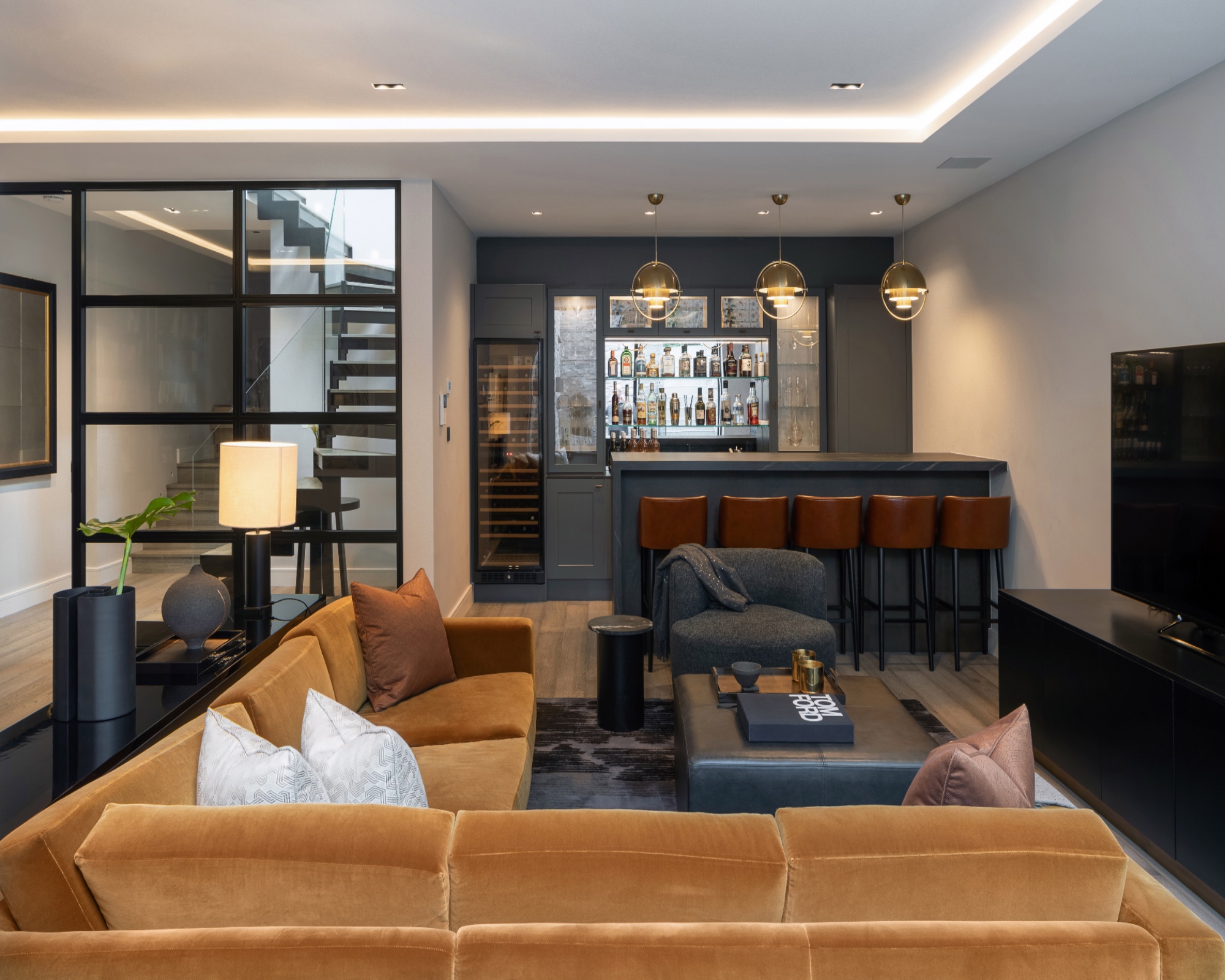
Once just an afterthought, basement ceiling ideas are coming into their own. No longer thought of as just a blackhole for storage boxes, basement ideas are becoming more and more exciting, from home theaters and gyms to games rooms and bars.
With that in mind, it’s worth giving a little extra thought to your basement ceiling; it can make all the difference to the look and feel of the finished room. In some cases, you can use it to visually increase square footage, too – perfect if you’re working with a small space.
Basement ceiling ideas to impress
Refining your basement ceiling doesn’t have to cost the earth – there are plenty of ceiling ideas to try which will give you a stylish look on a budget, with minimum effort. Especially if yours is in good shape and if you’re a fan of a loft-like look.
On the other hand, if you can afford (literally and figuratively) to go a little bolder, we say go for it. Similarly to a powder room, basements offer the perfect opportunity to have fun and be a bit adventurous with your design scheme; ‘you can make statements with color and pattern without worrying about how it will coincide with the rest of your home’s interior’, says Megan Dufresne, Principal Designer at MC Design.
So, if you’re planning your basement conversion, check out our roundup of best basement ceiling ideas, as well as practical advice, to ensure you get the best out of your fifth wall.
1. Keep it simple
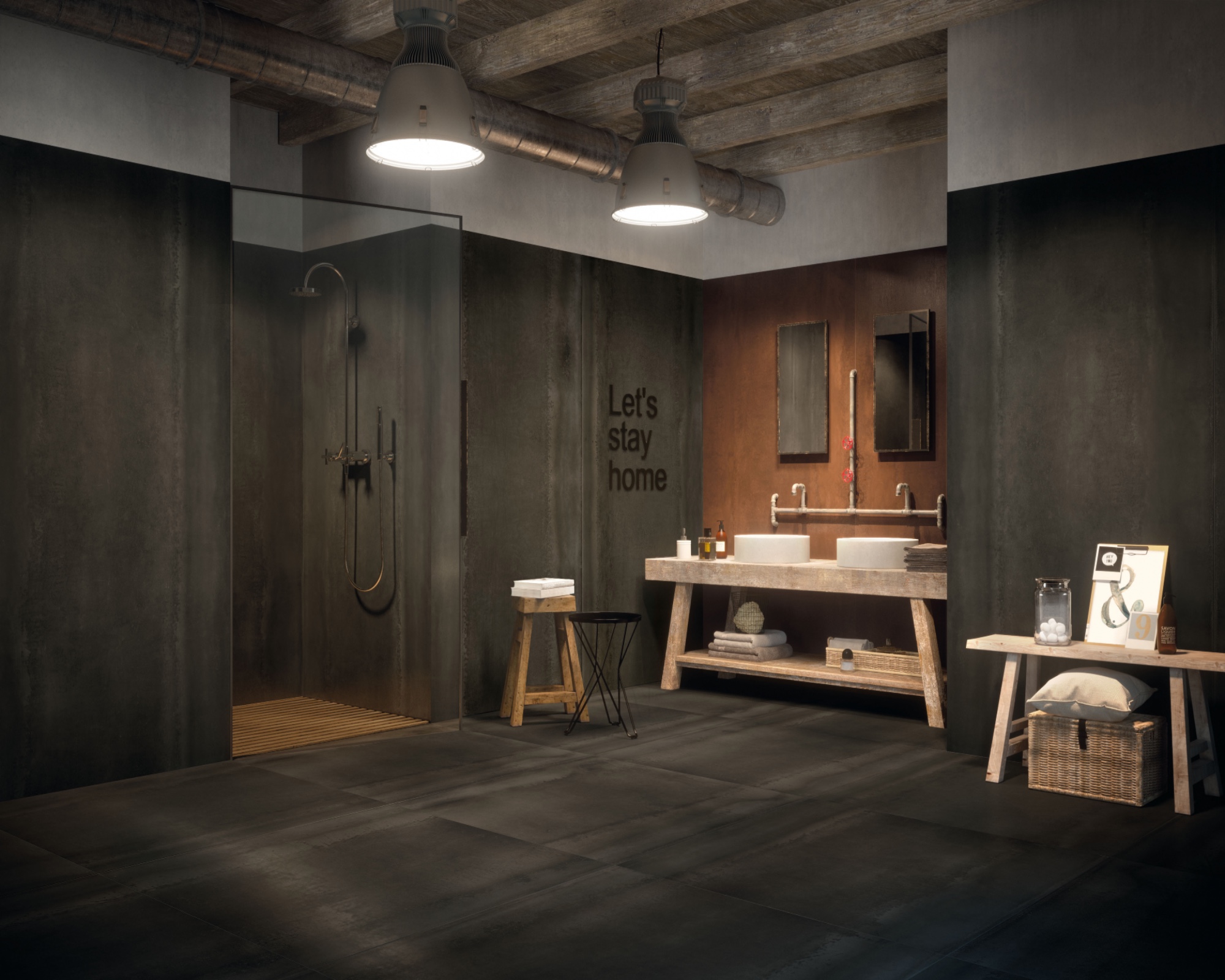
Sometimes the simplest solution is the most stylish as proved here by The Stone & Ceramic Warehouse. In this case, you don’t need to do anything at all to your basement ceiling – exposed metal pipes bring a seriously cool industrial vibe. If there are certain fixtures that you’re not keen on, consider hiding them behind strategically placed oversized lighting, or paint over with a matching gray paint.
2. Follow the curve
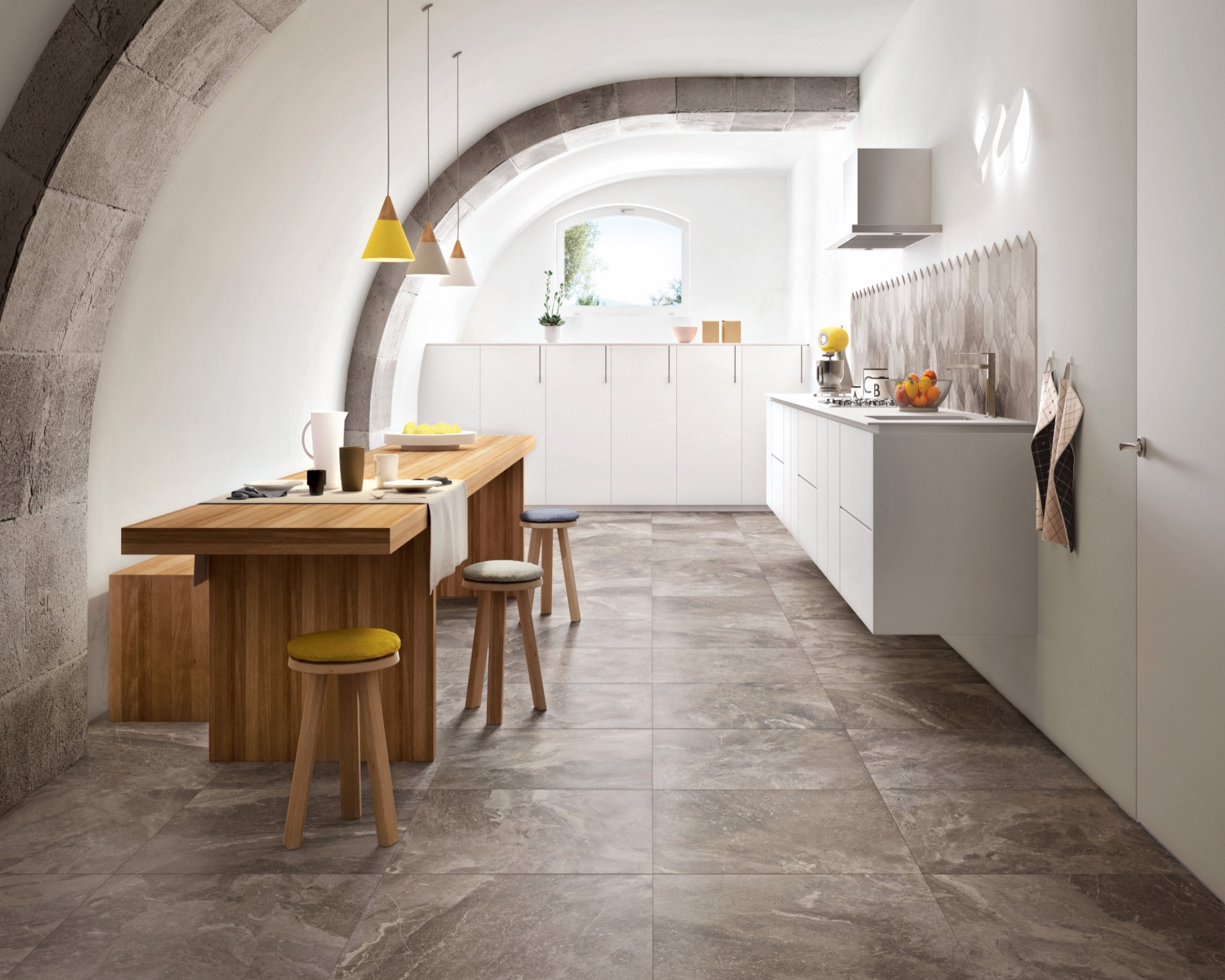
Basements come in all shapes and sizes, and to make the most of the available space, sometimes the ceiling must follow suit. This basement kitchen is an example of just how beautifully – and cleverly – this can be done. By bringing walls and ceiling together in a smooth curve, you can create the illusion of infinite space despite no extra square footage added.
Get small space home decor ideas, celeb inspiration, DIY tips and more, straight to your inbox!
3. Make the right lighting choices

Basements aren’t often blessed with a lot of natural light, so factoring adequate lighting into your ceiling design is essential. The key is to install fixtures that don’t dominate the space, (particularly if you’ve opted for a drop ceiling) making recessed lighting a popular choice.
‘Spotlights are always a great place to start; they’re low profile and, paired with a dimmer, will allow for full control depending on the time of day or activity’, explains Jen & Mar from Interior Fox.
4. Stay traditional
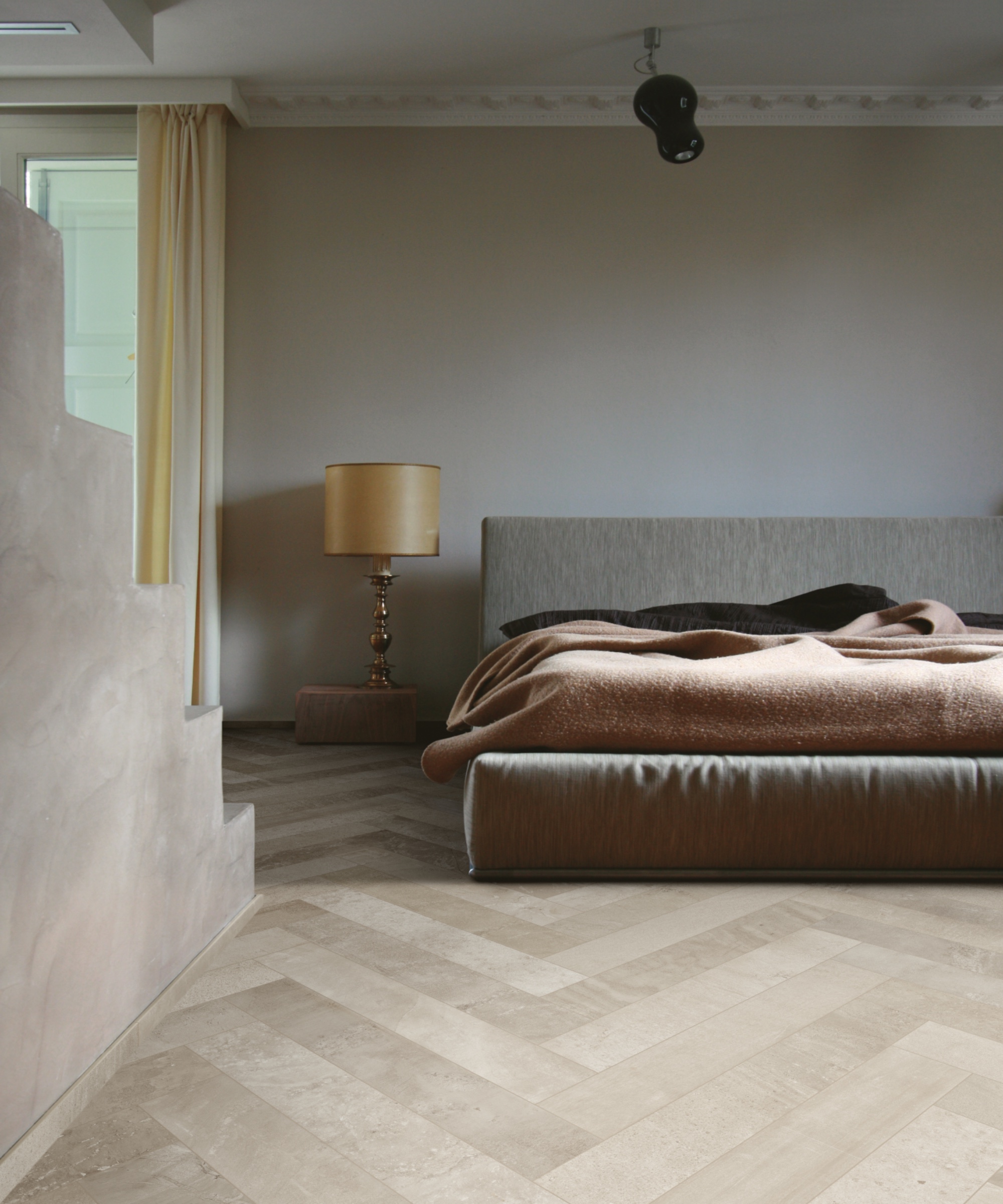
If you’re converting the basement of a traditional period property, consider installing features such as ceiling roses and crown molding to match the rest of the home.
‘Crown molding is a great way to lift a room – just adding this architectural detail can transform an area into a space that’s rich and brimming with character’, says Thomas Vibe, interior designer and founder of Stone Wizards.
Paint them in a coordinating shade for understated style or choose a bold contrast color for a modern twist.
5. Get creative with color
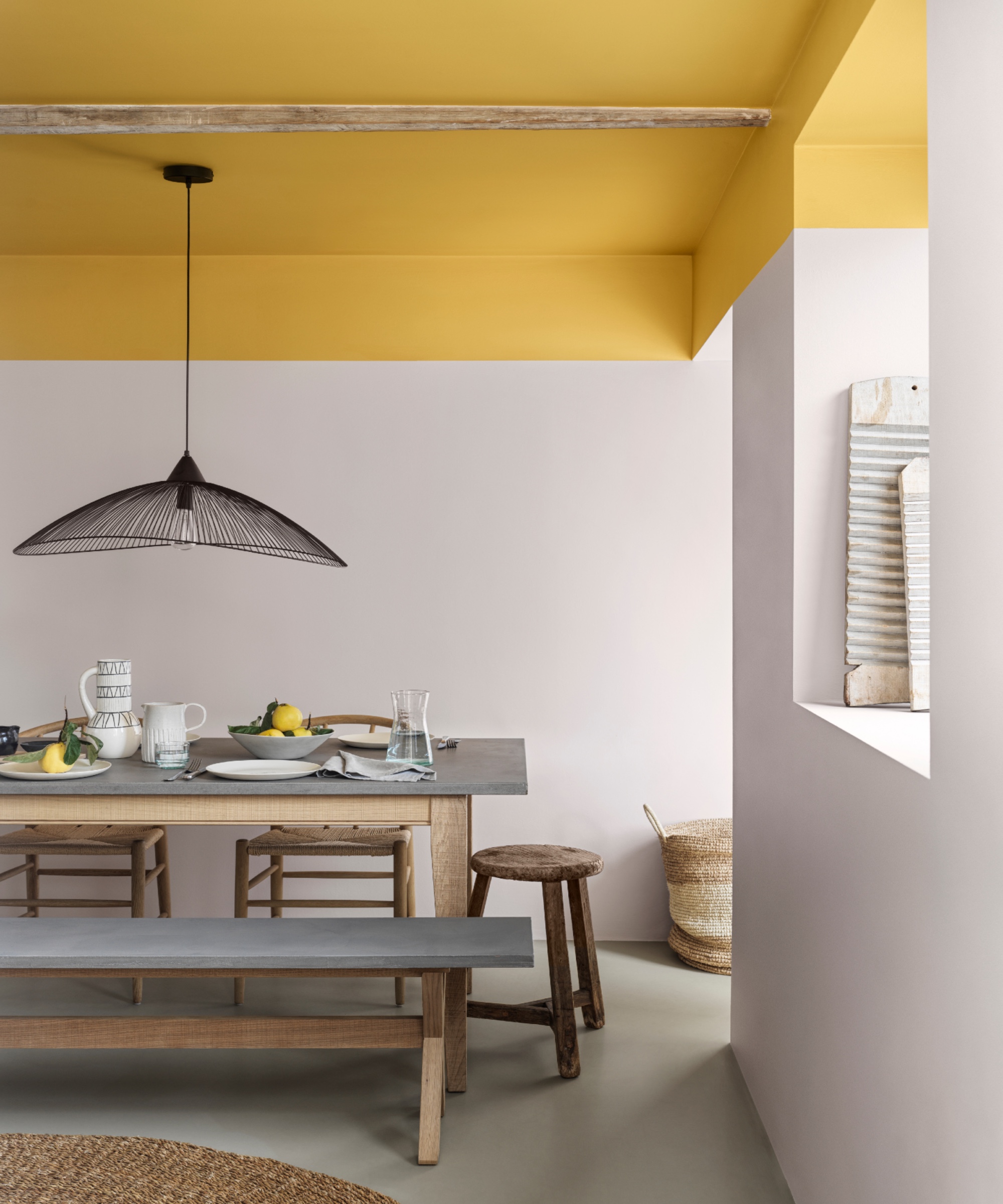
Why should walls have all the fun? Taking your feature paint color up and painting a ceiling not only creates the spacious illusion of a ‘fifth wall’, it’s also a lovely way of adding a bit of sunshine (quite literally, in this room’s case) to a basement, particularly if there’s no windows. Get the color look by Crown Paints.
6. Embrace existing wooden beams

Leaving original wooden beams exposed is an easy way of bringing natural warmth, texture and rustic authenticity to a basement ceiling, and involves next to no DIY on your part – bonus! The vertical lines exaggerate the feeling of height and length, too. If the wood’s a little too rustic for your taste, give it a coat of paint – white creates an airy feel and allows the natural grain to show through.
‘For a really striking design statement, you may want to think about something unexpected like wood ceiling planks or cladding to give your basement more texture and dimension’, adds Jo Oliver, Director of The Stone & Ceramic Warehouse.
7. Consider adding new ones
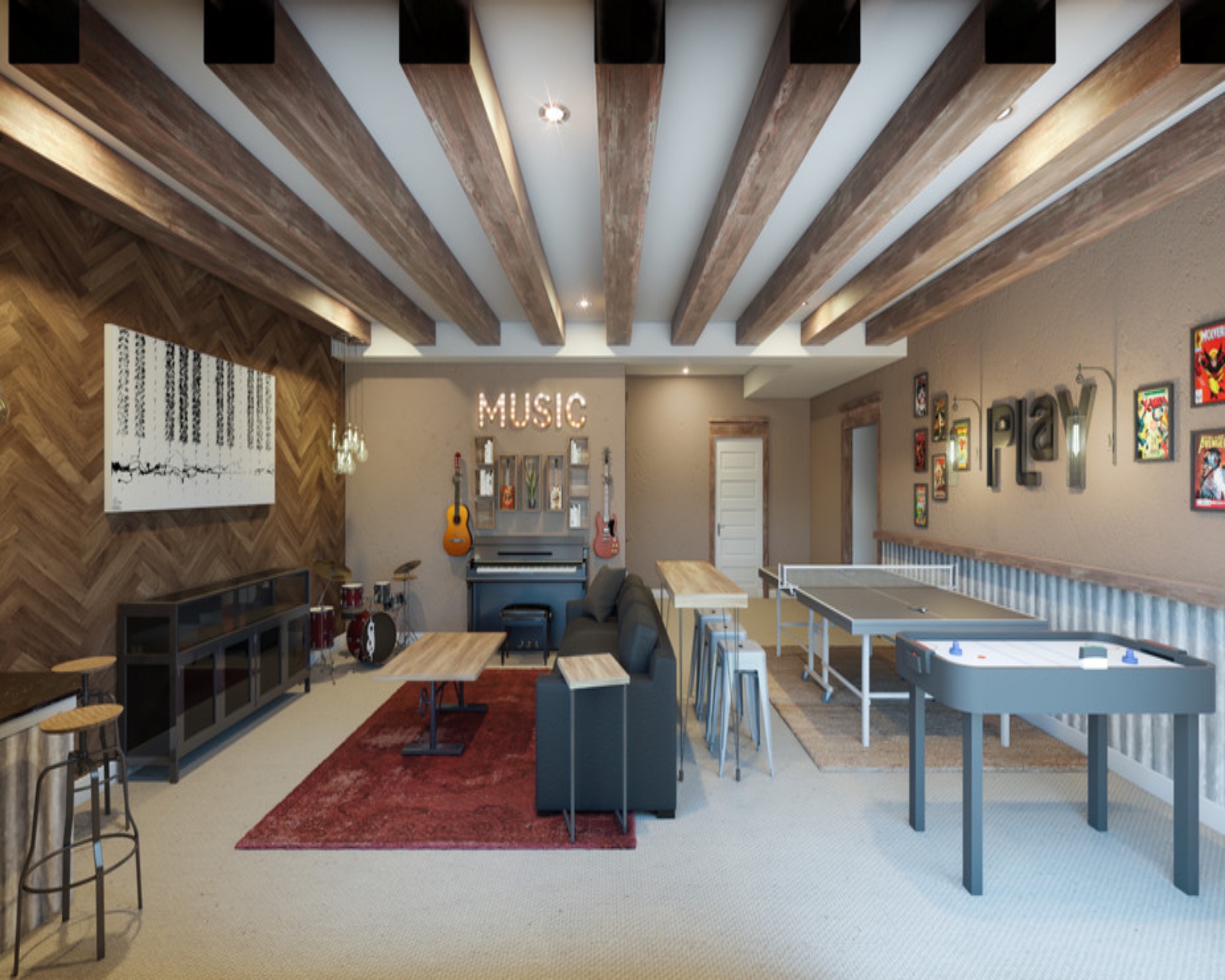
If your original wooden beams weren’t up to par, consider adding decorative ones (faux wood makes for a more affordable option) to dress up a white ceiling. Be sure to consult a home construction specialist first to ensure you’re positioning them correctly.
‘Adding beams to your basement ceiling can give it a more homely feel, especially if you’re converting it into a living or sitting room for the family’, says interior design blogger, Gina Kay Daniel. ‘Opt for lighter wood and a neutral color scheme to avoid making the space feel smaller than it is’.
Basement by Decorilla.
8. Mix up materials

The types of materials you choose will have a huge impact on the overall look and feel of your basement – not to mention your wallet. Opting for an inset ceiling allows you to incorporate high-quality materials into your design without using them across the whole ceiling – a neat way of finishing a basement on a budget without compromising on the result.
‘Drywall is available in an array of thicknesses and can be cut to size, making it a versatile material choice if you’re planning a ceiling inset’, says Laura A, Interior designer at Decorilla. ‘Here, the contemporary spin on a coffered style ceiling allows for wood beams to easily attach with construction adhesives'.
9. Disguise features you don’t like
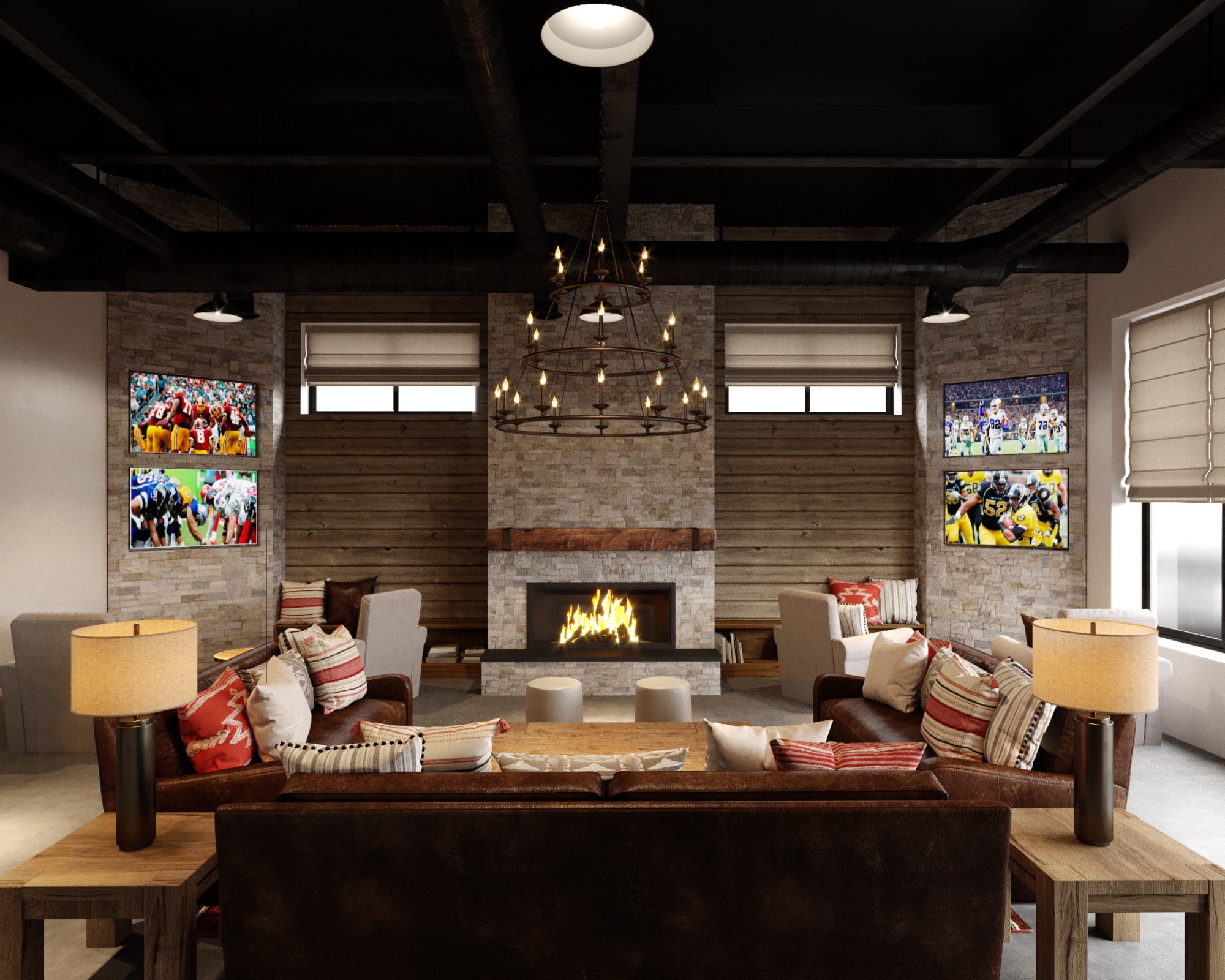
The loft-style look isn’t for everyone, but there’s an easy solution if you’re not a fan of exposed pipework – paint it all the same color. Here, a moody coat of dark black paint transforms this room’s utilitarian features into unimposing sculptural elements, cleverly mirrored by an ornate lighting fixture.
This technique allows you to conceal any ductwork or pipes in the space while still enabling you to be artistic with your design choices’, says Michael Simons, real estate broker and owner of Tres Amigos Realty Group.
Look created by Decorilla.
10. Keep it cozy with a drop ceiling

If you’re looking to create a cozy feel, a drop ceiling might be for you. Sometimes referred to as a suspended ceiling, they consist of a metal grid hung on joists by a frame and wires. Tiles or panels (available in a range of shapes, sizes, styles and materials) are then placed inside the openings. Unsurprisingly given its name, you do sacrifice on ceiling height, but they’re one of the best choices if you want your ceiling to look truly finished.
Leonard Aug, CEO of iProperty Management says: ‘If your basement ceiling is quite low already, a dropped ceiling is likely to mean tall guests will have to crouch a little if they want to see your lovely basement! Interlocking tiles that connect directly to the bottom of joists is a good alternative’.
11. Let white paint work its magic
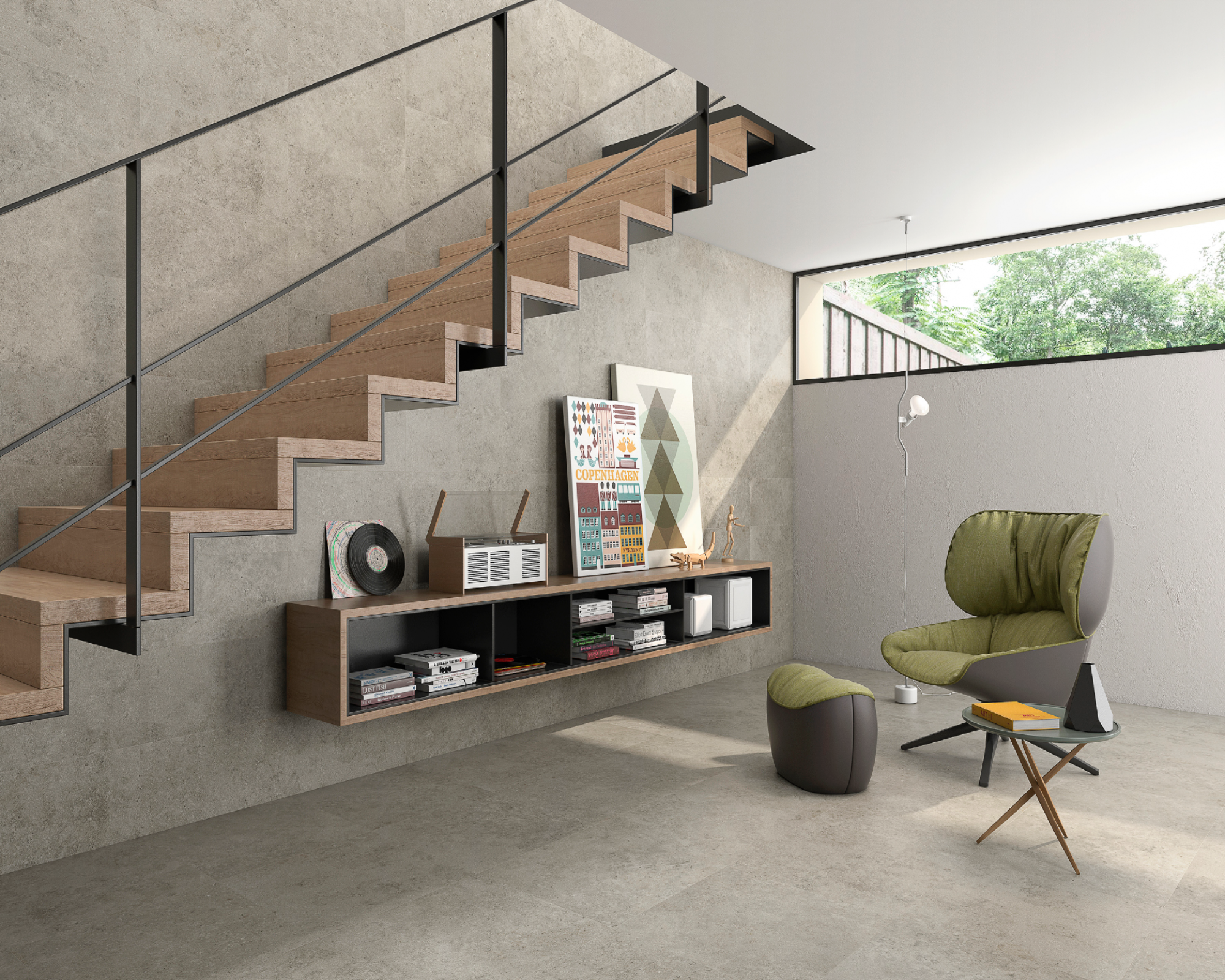
If you have windows in your basement, chances are they’ll be positioned at the very top of the wall, which doesn’t exactly flood the room with natural light. However, painting your ceiling bright white is a great way of ensuring what light you do have is as maximized as possible.
12. Add artistic flair with wallpaper
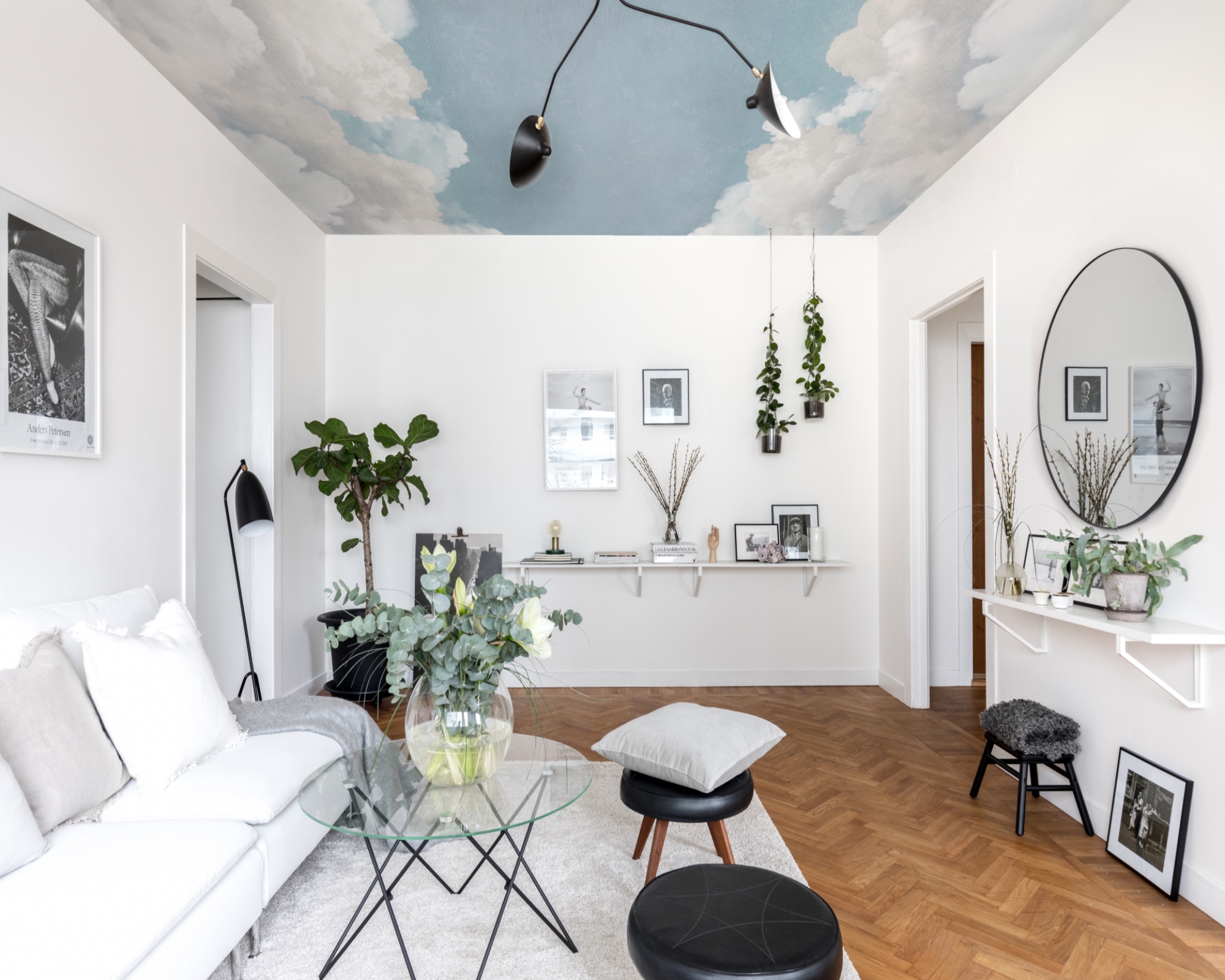
Who needs paintings on the wall when your entire ceiling can become a work of art? Ok, so a sky mural might not be for everyone, but the concept remains the same – simply choose a wallpaper pattern that works for you. We suggest you stick to neutral shades throughout the rest of the scheme – this allows the ceiling to take center stage.
Look byRebel Walls.
13. Let in natural light
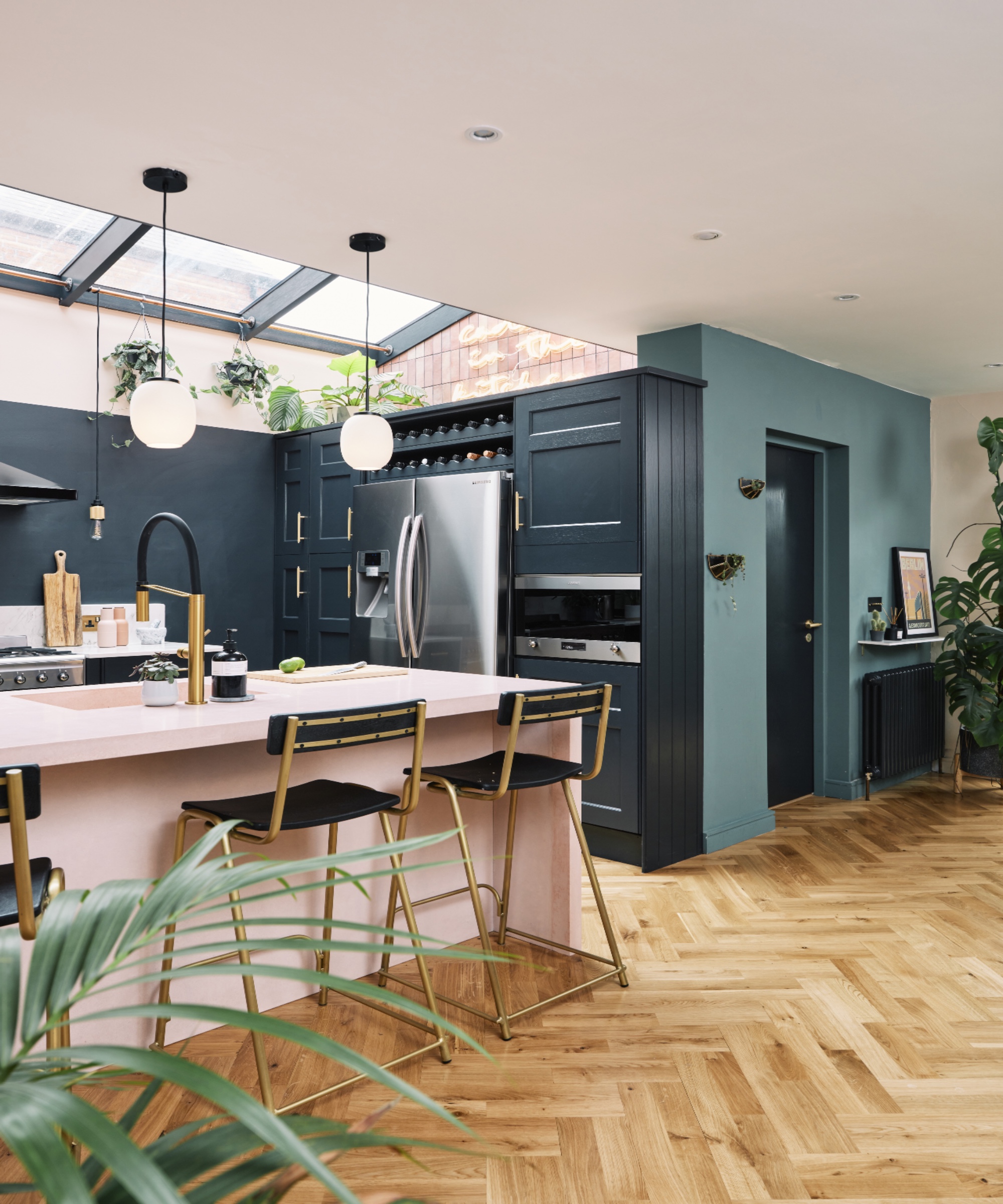
Consider positioning light wells within the ceiling. They bring in maximum light and look stylish, to boot. If you’ve extended your basement out underneath your yard, installing an external window made from walk-on glass is an option – and makes for a bit of a talking point! Simple tricks such as painting the walls of any lightwells in bright white and keeping foliage above neatly trimmed will help natural daylight travel down into your basement space, too.
If you’ve got no natural light sources available, consider adding an internal window at the ground-floor level to bring light from the room above into the basement below.
14. Choose a two tone look

Embrace the trend for monochromatic color schemes by painting your ceiling black and your walls white. A timeless classic, this color combination lends itself to a traditional décor scheme or contributes towards a more modern, cutting-edge look, as demonstrated here in this high-contrast basement design. Original rafters coasted in slate gray paint echoes the concrete flooring, while exposed wires and pipes add to the industrial feel.
Photography by Emily Henderson.
How do I make my basement ceiling look good?
When deciding on what looks good in a basement ceiling, it’s important to take the room you’re decorating into account. An industrial-style unfinished ceiling may look good in a kitchen, bathroom or games room, but wouldn’t suit a bedroom, for example.
If you have existing ceiling features in place, such as wooden beams, rafters or pipework, consider leaving them exposed as a stylish focal point within the room. If there are certain fixtures that you’re not keen on, you can hide them behind strategically placed oversized lighting, or paint over with a darker paint shade.
Drop ceilings suit cozier spaces, such as bedrooms, snugs and home theaters, and allow for personal style, with a range of tile options to choose from. Probably the most flexible of ceiling choices, a drywall ceiling suits any room type, and lends itself to easily updated transformation in the form of wallpaper, paint or paneling.
How can I cover my basement ceiling cheaply?
You don’t have to spend a ton of money to achieve a stylish basement ceiling, there’s plenty of options available. In fact, if you like the loft-style look, you can get away with doing absolutely nothing – can’t get much cheaper than that!
A drywall basement ceiling is inexpensive and leaves you with a smooth, clean surface to do with as you please. Leaving it white reflects light well, but it’s easy to add color; ‘if you have a modest renovation budget consider painting your basement ceiling. It’s arguably the most cost-effective way to create a pleasing update’, says Michael Simons, real estate broker and owner of Tres Amigos Realty Group.
Drop ceilings are also cheap to install, plus it’s one of the best choices if you want your ceiling to look truly finished. You can also adjust overall cost depending on your budget by choosing from tiles or panels in a range of shapes, sizes, styles and materials.
After the arrival of her second son – and subsequent departure of any free time outside of his unpredictable nap schedule (!) – seasoned writer Tara King decided to move on from her position as a Content Editor and enter the exciting world of freelance, covering interior design, DIY and lifestyle. Alongside features for Realhomes.com, Tara writes for Ideal Home, Style at Home, Country Homes & Interiors and other interiors publications. When she’s not working or ‘mumming’, she can be found (hiding) in the garden, attempting DIY projects… with varying levels of success!